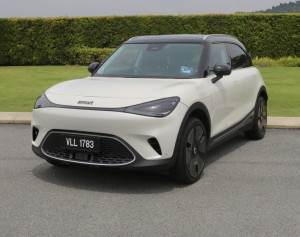Safety vs comfort: Which car assistance systems make the most sense?
By DPA | 28 September 2023
MUNICH: Cars are becoming increasingly safe thanks to assistance systems like the anti-lock braking system (ABS) and the ESP anti-skid system becoming standard and even mandatory equipment.
Safety aids like these help prevent accidents and more are on the way. In the European Union a raft of new systems will become mandatory in 2024, including emergency brake assist, emergency lane-keeping assist, and intelligent speed assist (ISA).
Systems like these make travel safer for all road users. However, they also require drivers to adapt to them.
"If the speed limit is 50 km/h, then the car warns at speeds above 50 km/h and not at 55 or 60 km/h, for example. Drivers have to adjust to that," says Andreas Rigling, who heads the Mobility and Active Vehicle Safety Test Centre at German motoring association ADAC.
But the benefits are clear: "Every accident is one too many. Property damage is often covered by insurance, but serious injuries or even deaths can never be offset by money."
Some systems are for safety, others for comfort
But Professor Markus Lienkamp of the Technical University of Munich (TUM) says it helps to distinguish between safety systems and comfort systems.
Comfort systems are designed to make driving more pleasant and include parking aids and ISA. Emergency brake assist on the other hand is one of the safety systems.
"And then there are systems that combine both, such as blind spot or lane departure warnings. These increase comfort and safety at the same time. That's why all effective assistance systems make sense," Lienkamp says.
Mercedes-Benz introduced ISA back in 2009. "ISA increases the safety of all road users because the driver is alerted if he or she does not comply with the prescribed speed," says Joachim Missel, Head of Development of Autonomous Driving and Active Safety at Mercedes.
Systems hit the brakes to avoid crashes
As many as 40 active safety systems can be found in new Mercedes vehicles. "Active brake assist in particular protects weaker road users such as pedestrians, cyclists and motorcyclists," Missel says.
Active brake assist, also known as emergency brake assist, uses sensors to register whether there is a risk of collision with other road users. If the system believes there will be a collision it issues a visual and audible warning to the driver and it can also decide to apply the brakes itself.
"In the case of pedestrians on the side of the road, the system distinguishes whether the pedestrian is standing or moving towards the road. In the case of the latter, it warns the driver first, then, if necessary, emergency braking takes place," Missel says.
The ADAC would like to see emergency brake assist also applied to reversing. Currently there’s only an acoustic or visual signal. “It would make more sense to have a braking intervention directly to avoid accidents," says Rigling.
Of course assistance systems are not infallible. They can make mistakes and drivers always bear the responsibility for driving the vehicle.
"But assistance systems mainly bring benefits, even if they can sometimes give false warnings or intervene incorrectly, because these can be easily controlled after a familiarisation phase," according to Rigling.
Some accidents can’t be prevented
"With new safety systems, the number of accidents can be reduced," says Lienkamp. However, he says, there are still accidents caused by alcohol, speeding, and suicide attempts that no assistant can prevent.
Assistance systems are only expected to get better. Together with chip manufacturer Nvidia, Mercedes-Benz is developing solutions based on artificial intelligence (AI) to better predict possible accidents, especially in urban areas.
Engineers believe AI could one day help prepare drivers for children running onto the road before it happens.
"In combination with ever-improving hardware such as radar, lidar, cameras, and ultrasound, we expect a significant improvement in the next few years," says Missel.
Tags
Autos News
Reviews

7.9
Xpeng G6 580 Pro: Fresh and fluidic

Guangzhou adventures: Zontes 368 scooter and 703 Adventure m...

Zontes motorcycle factory in Jiangmen: Running on a fast tra...

7.6
Maserati GranTurismo (Mk2) Modena: Sharp and smooth operator

6.8
Triumph Tiger 900 GT Pro: Multi-talented adventurer

Hyundai Ioniq 5 N: Born rascal

6.6
Husqvarna Svartpilen 401: Inspiring retro design

8.8
smart #1 (Premium): Agile, engaging, roomy, premium motoring
Videos

StarCarSifu Editors' Choice Awards 2024: Top winners

The Snowball – Lamborghini’s Heartwarming Christmas Story of...

EVOGO battery swapping solution showcased at IAA Mobility 20...
